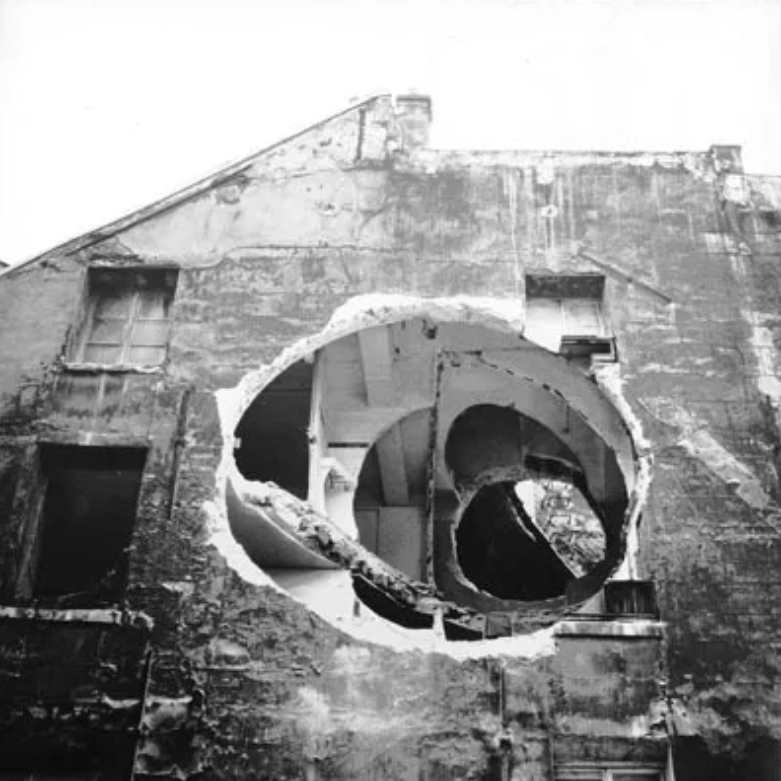Voids in Art and Architecture: Connotation and Deconstruction
DOI:
https://doi.org/10.69598/sbjfa269654Keywords:
Void, Sculpture and Architecture, Ready Made Object, Deconstruction, Signifier and Signified, Denotation and ConnotationAbstract
The foundation of Western art is based on form perfection, shaped by the ideologies of each era. The emphasis on form often led to disregarding voids, which were considered insignificant elements. It was not until the emergence of modern art that voids began to assert their position, with artists experimenting with them ironically and successfully. Both forms and voids convey explicit and implicit meanings within the socio-cultural context of each viewer and reflect the artist's intentions. This article explores the potential of voids in 20th century to early 21st century art and architecture based on structural semiotics and deconstruction philosophy especially denotation and connotation of signs. The findings are as follows: 1) Forms and voids reveal the presence or absence of components in each art piece, and their interactions unveil new interpretations, as exemplified in works such as Barbara Hepworth's "Oval Sculpture" and Henry Moore's "Large Two Forms." 2) The conveyance of meaning through multiple signs is influenced by the socio-cultural context of each viewer, exemplified by Antony Gormley's works, which subtly allude to Buddhist and Christian philosophies, as seen in "Sense" and "Flesh." 3) Declaring that "this is art" requires the convergence of different signs, as evidenced in works such as Anish Kapoor's "L'Origine du Monde." 4) Architectural communication relies on the complexion of signs, and deliberate alterations by architects can create an architectural language that becomes profound and meaningful. This transformation process preserves memory and history, as exemplified by Daniel Libeskind's "Jewish Museum Berlin." 5) In the case of existing historical architecture, as the artist had done it with readymade object, the process of deconstruction results in the simultaneous loss of original meanings and the acquisition of new ones. Examples include Gordon Matta-Clark's works like "Bronx Floor: Floor Above, Ceiling Below", "Splitting", and "Conical Intersect."
Downloads
References
ฉัตรมงคล อินสว่าง. (2562). พื้นที่แห่งการตื่นรู้ในประติมากรรมของแอนโทนี กอร์มลีย์. Veridien E-Journal, Silpakorn University (สาขามนุษยศาสตร์ สังคมศาสตร์ และศิลปะ), 12(6), 1851-1870.
เดอคร็อป, ฮันส์ ฌอร์ฌส์, (2545). บทแนะนำ: ฌากส์ แดร์ริดา (นพพร ประชากุล แปล). ใน สรรนิพนธ์มนุษยศึกษาและสังคมศาสตร์ในประเทศฝรั่งเศส ศตวรรษที่ 20. มิ่งเมือง.
นพพร ประชากุล. (2538). คำนำบทแปล โวหารของภาพ เขียนโดย โรลองด์ บาร์ตส์ (ประชา สุวีรานนท์ แปล). วารสารธรรมศาสตร์, 21(2), 110-129.
高村光太郎. (1973年). 高村光太郎 造型 (吉本隆明 - 北川太一、編者.). 春秋社.
Astbury, J. (2022). Daniel Libeskind's Jewish Museum is a "foreboding experience" [Online Image]. Dezeen. https://www.dezeen.com/2022/05/20/daniel-libeskind-jewish-museum-deconstructivist-architecture/
Capanna, A. (2009). Music and Architecture: A Cross between Inspiration and Method. Nexus Network Journal, 11(2009), 257-272. DOI:10.1007/978-3-7643-8976-5_8
Decrop, H. G. (2002). Introduction: Jacques Derrida (N. Prachakul, Trans.). in Sciences humaines et sociales en France au XXe siecle: une anthologie. Ming Muang. [in Thai]
Fortenberry, D. (ed). (2017). The Art Museum. Phaidon.
Gormley, A. (1990). Flesh [Sculpture]. https://www.antonygormley.com/works/sculpture/overview
_____. (1991). Sense [Sculpture]. https://www.antonygormley.com/works/sculpture/overview
Hepworth, B. (1967). Oval Sculpture (No.2) [Sculpture]. Tate. https://www.tate.org.uk/art/artworks/hepworth-oval-sculpture-no-2-t00953
Insawang, C. (2019). The Space of Awareness in Anthony Gormley’s Sculptures. Veridien E-Journal, Silpakorn University (Humanities, Social Sciences and Arts), 12(6), 1851-1870. [in Thai]
Kapoor, A. (2004). L’Origine du monde: Concretes and pigment, 21st Century Museum of Contemporary Art, Kanazawa [Online Image]. https://anishkapoor.com/80/origine-du-monde
Matta-Clark, G. (1972). Bronx Floors: Floor Above, Ceiling Below [Online Image]. Belvedere https://sammlung.belvedere.at/objects/23687/bronx-floors-floor-above-ceiling-below;jsessionid=2A2B21068A64322CBB99B1F741B1FFA4
_____. (1974). Splitting [Online Image]. MoMA. https://www.moma.org/collection/works/398954
_____. (1975). Conical Intersect [Online Image]. San Francisco Museum of Modern Art (SFMoMA). https://www.sfmoma.org/artwork/92.426/
Moore, H. (1966). Large Two Forms, 1966-69 [Sculpture]. Elephant. https://elephant.art/take-a-walk-enjoying-art-outdoors/henry-moore-large-two-forms-1966-69-reproduced-by-permission-of-the-henry-moore-foundation-courtesy-yorkshire-sculpture-park-photo-c-jonty-wilde/
Pavka, E. (n.d.). AD Classics: Jewish Museum, Berlin/ Studio Libeskind [Online Image]. Archdaily. https://www.archdaily.com/91273/ad-classics-jewish-museum-berlin-daniel-libeskind
Prachakul, N. (1995). Preface: Rhetoric of Image. by Barthes. R. (P. Suveeranont, Trans.). Thammasat University Journal, 21(2), 110-129. [in Thai]
Reynolds, P. (2019). At The Rose, 'Gordon Matta-Clark: Anarchitect' Deconstructs the Life and Work of an Iconoclast [Online Image]. WBUR. https://www.wbur.org/news/2019/09/18/rose-art-museum-gordon-matta-clark-anarchitect
Shinde, H. (2020). Notes on Daniel Libeskind’s Extension of the Berlin Museum with the Jewish Museum Addition [Online Image]. https://shinde.co/notes-on-daniel-libeskind-39-s-extension-of-the-berlin-museum-with-the-jewish-museum-addition
Takamura, K. (1973). Kōtarō Takamura Modeliing (T. Yoshimoto & T. Kitagawa, Eds.). Shunjusha. [in Japanese]
Wines, J. (1989). ‘The Slippery Floor’. in Papadakis, A., Cooke, C. & Benjamin, A. (Eds.). Deconstruction: Omnibus Volume. Academy Editions, 135-139.

Downloads
Published
How to Cite
Issue
Section
License
Copyright (c) 2024 © by the Author(s) & Silpa Bhirasri Journal of Fine Arts.

This work is licensed under a Creative Commons Attribution-NonCommercial-NoDerivatives 4.0 International License.
The journal's editorial team does not have to agree with the views and comments in the author's article, nor are they responsible for the comments.











